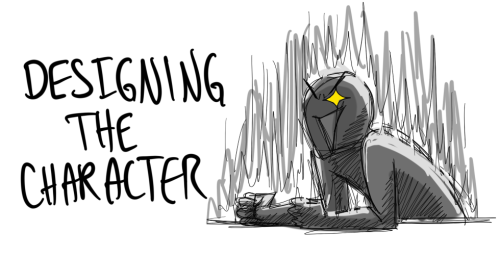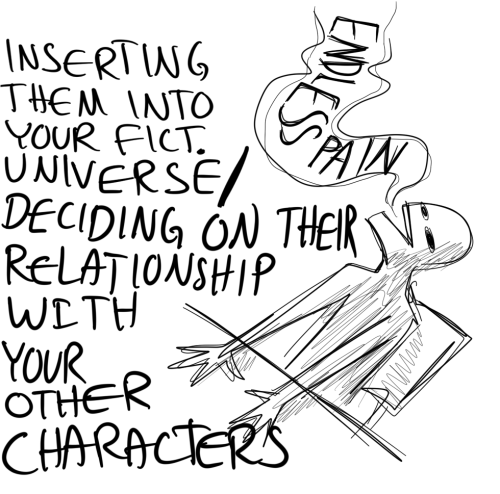What Happened In Portugal In 1974 Needs To Happen In Russia.
What happened in Portugal in 1974 needs to happen in Russia.
Today, April 25th, is the 48th anniversary of the 1974 Portuguese Revolution. A group of junior and middle ranking officers in the Portuguese military overthrew a fascist dictatorship which had been in power over 40 years.
The Estado Novo régime came to power in the same era as Mussolini, Hitler, and Franco. However it had been less heavy handed than those other dictatorships; its first and longest lasting leader, António Salazar, was a fervent Catholic who was turned off by the “paganism” of his fellow pre-war dictators and ruled accordingly. Still there were secret police, limits on free speech and the press, and no genuinely fair elections.
By the mid 1970s, Portugal was the last European country to have a colonial empire. A non-stop series of wars in the colonies had taken a large toll on the country. Younger and more clear-thinking officers decided that a change in the country was long overdue.
BBC History Extra describes what happened.
In March 1974, General António de Spínola was dismissed from his position as deputy minister of the armed forces.
He had written a book in which he suggested that the Portuguese colonial wars should come to an end. He was critical of the current Portuguese regime, something that was regarded as heretical by Portugal’s right-wing establishment.
The Armed Forces Movement (MFA) was soon formed by dissident and low- ranking officers who supported Spínola. Captains within the armed forces were also unhappy with a law which would grant privileges to conscripted officers, to the resentment of professionally trained officers. The armed forces’ support for the government was rapidly deteriorating.
Just before midnight on 24 April, Portugal’s entry for the Eurovision Song Contest – ‘E Depois do Adeus’ (And After The Farewell) – was played by the radio station Emissores Associados de Lisboa, as had been arranged by the rebels. This was the first of two secret signals that the army was waiting for.
Tanks entered the centre of Lisbon in the early hours of 25 April and soon the airport, television and radio centres were taken over, as well as the Salazar Bridge over the river Tagus. Prime Minister Marcello Caetano, along with other ministers, had taken refuge in the Carmo barracks, which housed the National Republican Guard, and these were stormed by troops, armed with machine guns. With little resistance, Caetano surrendered to Spínola.
[ … ]
Radio appeals by the revolutionaries asked people to stay inside, but many flooded the streets and joined in, supporting the troops. By the time the sun had risen on 26 April, the MFA was in charge and promised to hold democratic elections for a national assembly as soon as they could.
In 2014 for the 40th anniversary, NBC News did a piece on it.
Portugal Honors April 25 Revolution, the World’s Coolest Coup
They took less than 24 hours to bring down Europe’s longest-lived dictatorship and signal the end of the last colonial empire in Africa.
“It was a coup like no other,” recalled Swiss journalist Werner Herzog, who reported on the revolution.
“The atmosphere was more like a party,” he joked at a conference on Wednesday. “None of us had ever heard of an army intervening to bring democracy, surely it’s normally the other way round.”
It certainly did turn out to be cool. By June of 1976 Portugal had drafted a constitution, elected a parliament, and installed a president – all peacefully and democratically. In just 26 months, Portugal had gone from a fascist dictatorship to a fully functioning Western liberal democracy. And it’s still doing fine today.
Portugal is one of the most stable and resilient truly democratic countries on the planet. It’s amazing what a success story it has been. It is proof that a difficult history doesn’t have to be a drag on a country’s present and future.
As for Russia, we can only hope that there are middle ranking officers currently plotting to remove their own fascist régime. They do have a much more difficult job than their Portuguese counterparts in 1974. The Estado Novo régime was fascism lite while Putin is a lot more like the hardcore Nazis of the late 1930s in Germany.
Anyway, the BBC excerpt above alluded to “the first of two secret signals” which were played on Lisbon radio stations to give the go-ahead for the revolution. The second was more important and is now a revered patriotic song in Portugal. Grândola, Vila Morena had been banned on radio by the government. So when it was played just after midnight on Rádio Renascença on April 25th, everyone involved knew there was no turning back.
More Posts from Dabriaanderlaine and Others
If u want to write a story about a character that's just you but hotter with a dark twisted backstory and magical powers and a pet falcon or something, I think u should just go ahead and do that. Who's gonna stop you? The government?? Fuck the police.
Hi Neil, as someone who wants to write and can't bring themselves to write, despite loving writing and wanting to write; how do you write? Is there a magical way to make yourself write? Or is the truth more honest and genuine: that writing is the way to write?
I have half a novel, a deep desire to write, and an inability to make my fingers type the words.
How do I circumvent this? Or, as I suspect, is there truly no shortcut?
There's no shortcut. You polish a chair with your bottom, get through the backache and the bad days and you write it, one word at a time.





the suffering never ends
You know, even apart from the intricate worldbuilding about the talking rodents and what their deal is, the part of The Secret of NIMH that's like "working single mom trying to obtain medical treatment for her sick child discovers that her late husband was basically a high-level Dungeons & Dragons character and never told her about any of it, and she keeps tripping over elements of his unreasonably complicated backstory whose context and significance are never fully explained to the audience because the particulars aren't relevant to her journey" is a really fun premise all on its own.
Some Quick Character Tips
Here are a handful of quick tips to help you write believable characters!
1. A character’s arc doesn’t need to grow linearly. Your protagonist doesn’t have to go from being weak to strong, shy to confident, or novice to professional in one straight line. It’s more realistic if they mess up their progress on the way and even decline a bit before reaching their goal.
2. Their past affects their present. Make their backstory matter by having their past events shape them into who they are. Growing up with strict parents might lead to a sneaky character, and a bad car accident might leave them fearful of driving.
3. Give reoccurring side characters something that makes them easily recognizable. This could be a scar, a unique hairstyle, an accent, or a location they’re always found at, etc.
4. Make sure their dialogue matches their personality. To make your characters more believable in conversation, give them speech patterns. Does the shy character mumble too low for anyone to ever hear, does the nervous one pace around and make everyone else on edge?
5. Make your characters unpredictable. Real people do unexpected things all the time, and this can make life more exciting. The strict, straight-A student who decides to drink at a party. The pristine princess who likes to visit the muddy farm animals. When character’s decide to do things spontaneously or in the heat of the moment, it can create amazing twists and turns.
6. Give even your minor character’s a motive. This isn’t to say that all your characters need deep, intricate motives. However, every character should need or want something, and their actions should reflect that. What’s the motive behind a side character who follows your protagonist on their adventure? Perhaps they’ve always had dreams of leaving their small village or they want to protect your protagonist because of secret feelings.
Instagram: coffeebeanwriting
Creating a Fictional Culture: How to Create a Fictional Culture
Happy New Year Everyone!
In case you haven’t seen my Fan Fiction Writers Needed Post please check it out and consider applying for the job!
Anyways, let’s get to it! First advice of the New Year!
What Is a Fictional Culture?
A fictional culture is an essential piece of worldbuilding in certain genres of fiction—particularly in science fiction and fantasy.
Storytellers develop fictional cultures in a variety of mediums, including film, television, short stories, novels, and video games. A fictional culture is defined by the customs, languages, values, and symbols of an imaginary world.
How to Create a Fictional Culture
Although there are nearly endless possibilities, consider some of these general writing tips for creating a fictional culture.
Pull inspiration from the real world. Pay attention to the cultural behaviors within your society. Broaden your own cultural perspective by researching the ideas and values of different cultures throughout history. Use real-life cultural examples to inform your fictional world, but be wary of repurposing existing cultures or perpetuating stereotypes.
Build off your main character. Develop the setting of your story based on how it serves the character development of your protagonist. Build a culture that highlights or contradicts your main character’s goals, needs, and fears.
Develop a belief system. Consider the core values, social norms, and taboos of your fictional culture. A central belief system can guide how you create rituals, symbols, and artifacts within your story.
Create a social structure. Develop how the family structures and social hierarchies work within your fictional culture. Decide where your main character falls within the social structure. Monetary systems can change your social structure depending on whether you use a bartering economy or something more complex.
Construct a technological system. Determine how advanced the technology is in your fictional culture. The technology of your story will impact the entertainment, communication, and modes of transportation within your fictional world.
Write a brief history. Expand your culture by writing a brief mythology of your fictional society. Avoid overwriting, and keep your history contained to important information that can impact your story.
Develop a Unique Language. Probably one of the most exciting yet difficult aspects of creating a fictional culture. Take a look at other language such as Greek or Latin or really any language you are curious about! Creating a language is not necessarily about switching up some lettering or word phrasing (it can be, but not 100%); it’s much more than that! I definitely welcome you to research and create your own language.
4 Examples of Fictional Cultures
The Lord of the Rings by J.R.R. Tolkien (1954): Tolkien created a wide variety of fictional cultures to inhabit Middle-earth. Each culture has its own language, value system, and history.
Brave New World by Aldous Huxley (1932): In his dystopian novel, Aldous Huxley developed a complex and technologically advanced culture with distinct social classes.
Dune by Frank Herbert (1965): Dune is an influential sci-fi novel with several detailed fictional cultures. One of them is the Fremen culture, which revolves around ancient superstitions and a rare commodity known as the Spice Melange.
The Fifth Season by N. K. Jemisin (2015): In this award-winning novel, Jemisin created a complex social structure with many "use-castes” that all have a place on an earthquake-ridden planet with one supercontinent.
I don't 'write' my characters, I just watch them do stupid shit and write up the incident report.
Subplots 101
Subplots are an essential part of storytelling that can add depth and complexity to your book's overall narrative. This post covers a step-by-step guide to making subplots, general tips, and some examples of subplots in YA books.
Step-by-step guide to making a new subplot
Identify a secondary character
Consider a secondary character in your story who is not directly involved in the main plot. This could be a friend or family member of the protagonist, or a peripheral character who has a unique perspective on the world of the story.
Create a conflict
Think about a conflict or challenge that this character could face, which could be related to their personal life or a separate issue in the story. This conflict should be something that the character needs to overcome or resolve.
Connect the subplot to the main plot
Consider how this subplot could connect to the main plot. This could involve having the main character help the secondary character with their conflict, or having the subplot reveal important information that impacts the main plot.
Develop the subplot
Once you have established the groundwork for the subplot, develop it in detail, including the character's motivations, the obstacles they face, and the resolution to the conflict.
General tips for a good subplot:
Make sure your subplots are related to the main plot
Subplots should be tied to the main plot in some way, either by affecting the main character or providing additional context for the story.
Develop separate character arcs
Your subplots should have their own character arcs that tie in with the main character's arc. This allows for additional character development and can help create a more immersive world.
Use subplots to reveal new information
Subplots can be a great way to reveal new information about the world or characters that might not be relevant to the main plot. This can help make the world feel more alive and fleshed out.
Keep subplots contained
Subplots should not take over the main plot. They should be contained and serve to enhance the main plot rather than distract from it.
Examples of subplots:
Harry Potter and the Goblet of Fire by J.K. Rowling
Harry and Draco's rivalry
Hermione's fight for the rights of house-elves
the mystery surrounding the Death Eaters.
The Hunger Games by Suzanne Collins
The main plot of The Hunger Games is Katniss's fight to survive in the games. However, there are several subplots that tie into the main plot, such as her complicated relationship with Peeta and her struggle to reconcile her feelings for him with her need to survive.
Remember, subplots should enhance and support the main plot of your story, adding depth and complexity to the overall narrative. I'd recommend having 2-3 subplots of varying depth, depending on how important they are to the story, but obviously that's entirely up to you.
Sometimes fiction doesn’t have a moral to the story. Sometimes fiction points at something and goes “Ever thought about THAT???” And you look at what it’s pointing at for a bit.
-
 geeztumbr61 liked this · 1 year ago
geeztumbr61 liked this · 1 year ago -
 nodynasty4us reblogged this · 1 year ago
nodynasty4us reblogged this · 1 year ago -
 nodynasty4us liked this · 1 year ago
nodynasty4us liked this · 1 year ago -
 waternymph55 reblogged this · 1 year ago
waternymph55 reblogged this · 1 year ago -
 waternymph55 liked this · 1 year ago
waternymph55 liked this · 1 year ago -
 erik-even-wordier reblogged this · 1 year ago
erik-even-wordier reblogged this · 1 year ago -
 erikag59 liked this · 1 year ago
erikag59 liked this · 1 year ago -
 russalex reblogged this · 1 year ago
russalex reblogged this · 1 year ago -
 jamejest reblogged this · 1 year ago
jamejest reblogged this · 1 year ago -
 glendathegoodone reblogged this · 1 year ago
glendathegoodone reblogged this · 1 year ago -
 glendathegoodone liked this · 1 year ago
glendathegoodone liked this · 1 year ago -
 justsayin59 reblogged this · 1 year ago
justsayin59 reblogged this · 1 year ago -
 justsayin59 liked this · 1 year ago
justsayin59 liked this · 1 year ago -
 tomorrowusa reblogged this · 1 year ago
tomorrowusa reblogged this · 1 year ago -
 jbrfreitas liked this · 1 year ago
jbrfreitas liked this · 1 year ago -
 dnlfelix liked this · 2 years ago
dnlfelix liked this · 2 years ago -
 lunasilvis liked this · 2 years ago
lunasilvis liked this · 2 years ago -
 dabriaanderlaine reblogged this · 2 years ago
dabriaanderlaine reblogged this · 2 years ago -
 dabriaanderlaine liked this · 2 years ago
dabriaanderlaine liked this · 2 years ago -
 jedwin1123 liked this · 3 years ago
jedwin1123 liked this · 3 years ago -
 tomorrowusa reblogged this · 3 years ago
tomorrowusa reblogged this · 3 years ago

